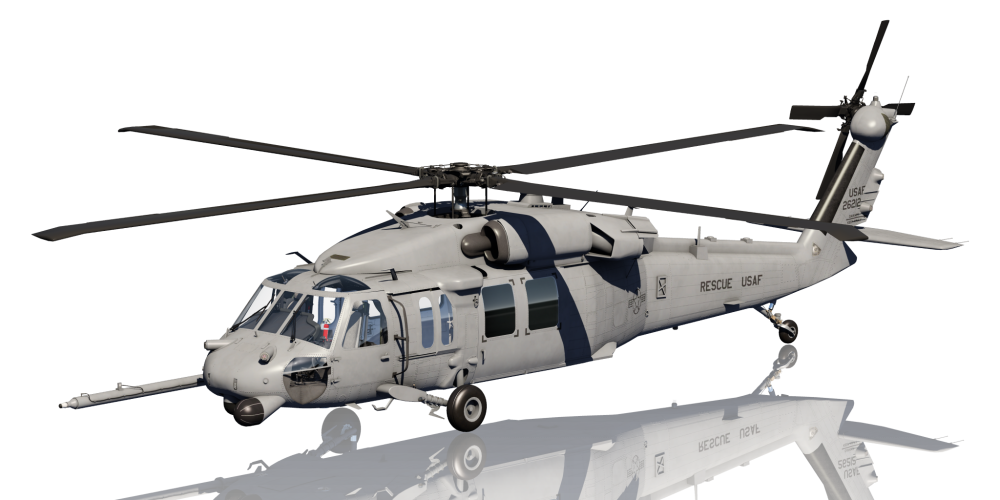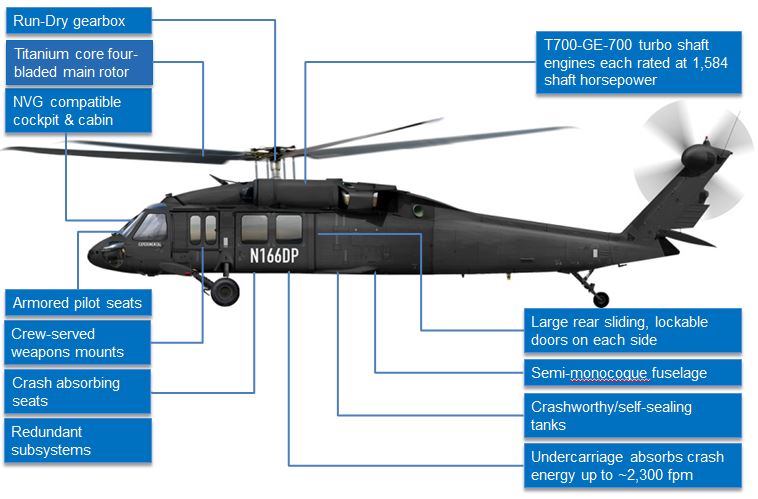UH-60: Advancements in Modern Helicopter Design
The UH-60 helicopter stands as a criteria in modern aeronautics, showcasing substantial improvements in style and technology that provide to the advancing demands of military operations. Its incorporation of innovative materials not only boosts efficiency but also addresses critical safety and security worries. Additionally, the integration of innovative avionics has actually transformed functional capabilities, enabling higher situational awareness and decision-making performance. As we check out the evolution and key developments of the UH-60, it ends up being important to take into consideration how these advancements influence not only present applications but likewise the future landscape of helicopter layout.

Development of the UH-60
The development of the UH-60 Black Hawk helicopter represents a substantial turning point in aerospace engineering and army aeronautics. Introduced in the late 1970s, the UH-60 was designed by Sikorsky Airplane to fulfill the United States Army's demand for a flexible utility helicopter with the ability of doing a variety of goals. Its style stressed speed, resilience, and ability to move, establishing new criteria for operational efficiency.
The UH-60 features a distinct four-blade rotor system, which boosts lift and stability, enabling it to operate successfully in varied atmospheres. Its airframe is created from advanced composite materials, adding to a reduction in weight while keeping structural integrity. The helicopter's style additionally incorporates enhanced the rules of aerodynamics, which enhances gas efficiency and boosts array.
Over the years, the Black Hawk has actually undertaken multiple upgrades to improve its capacities, consisting of improved engines, advanced flight control systems, and modular systems for easy upkeep and flexibility. The helicopter's capability to perform missions ranging from army transportation to clinical evacuation has actually strengthened its duty as a backbone of U.S. military operations. The UH-60 Black Hawk stays an archetype of just how innovation in helicopter layout can dramatically influence military efficiency and functional versatility.
Advanced Avionics Equipments
Innovations in avionics systems have actually changed the capabilities of modern helicopters like the UH-60 Black Hawk, enhancing operational efficiency and situational understanding (UH 60). The combination of advanced avionics permits enhanced navigation, communication, and flight monitoring, making the UH-60 extra functional in varied objective profiles
One of the key features is the innovative electronic cabin, which utilizes multifunction screens that supply real-time data, making sure pilots have instant access to crucial flight details. This streamlining of details reduces pilot workload and boosts decision-making processes during facility procedures. Furthermore, the consolidation of GPS and inertial navigating systems allows precise positioning and course preparation, improving objective implementation in tough environments.
In addition, progressed avionics systems enhance interaction abilities via safe data web links and voice communication systems, permitting seamless coordination with ground pressures and other airplane. The integration of automated flight control systems further adds to enhanced security and control, particularly in damaging weather or during low-altitude maneuvers.
Engine and Efficiency Enhancements
Engine performance in modern-day helicopters has taken a considerable leap forward, driven by developments that improve dependability, performance, and power. At the forefront of these improvements is the fostering of more powerful turboshaft engines, specifically those utilizing advanced materials and modern technologies that make it possible for higher temperature level resistances and increased thrust abilities. The UH-60 Black Hawk, for circumstances, uses the T700-GE-701C engine, which includes a dual-channel, full-authority electronic engine control system. This system enhances performance while enhancing gas consumption and decreasing upkeep demands.
Additionally, the integration of engine health monitoring systems allows for real-time diagnostics and predictive upkeep, dramatically boosting functional dependability. These systems not just alert crews to potential issues prior to they come to be critical however likewise help with more efficient upkeep organizing, thus decreasing downtime.

Materials and Structural Innovations
Current growths in products and architectural layout have actually revolutionized modern helicopter building, boosting both efficiency and sturdiness. The introduction of sophisticated composite products, such as carbon fiber strengthened polymers, has actually substantially lowered weight while keeping architectural honesty. This change not just boosts gas performance yet additionally raises haul ability, enabling helicopters like the UH-60 to do more diverse missions.
In addition, developments in aluminum alloys and titanium parts have actually contributed to enhanced resistance to deterioration and tiredness, extending the lifespan of essential airframe elements. The strategic use these products has led to a decrease in maintenance needs and enhanced overall functional readiness.

Furthermore, the combination of computer-aided my website design (CAD) and additive production technologies has actually enabled a lot more lightweight frameworks and complex geometries, enhancing the wind resistant performance of helicopter designs. These advancements facilitate fast prototyping and production, enabling suppliers to react quickly to developing objective needs.
Security and Survivability Attributes
Safety and survivability functions in modern helicopter layout have become paramount, reflecting the increasing needs for goal effectiveness in difficult environments. The UH-60 Black Hawk, a significant instance, incorporates sophisticated modern technologies to enhance staff and traveler defense. Among one of the most critical innovations is the consolidation of crashworthy gas systems designed to minimize the danger of fire during effect. Additionally, the airframe is built sites with enhanced products that dissipate and take in power, further safeguarding residents in case of a collision.
The helicopter likewise employs a ballistic security system, which includes armored team seats and vital systems securing, minimizing susceptability to small arms fire and shrapnel. Boosted situational understanding is attained with sophisticated avionics and sensing unit innovations, permitting pilots to find and stay clear of dangers successfully.
Moreover, the combination of redundancy in essential systems-- such as twin engines and several flight control networks-- makes sure continued procedure also if one system fails. The UH-60 is equipped with sophisticated emergency situation flotation gadgets, boosting survivability in water landings. Jointly, these functions not only boost the safety of employees however likewise boost objective success rates in hostile environments, showing the commitment to excellence in helicopter layout.
Final Thought
The UH-60 helicopter stands for a considerable improvement in contemporary air travel modern technology, integrating ingenious materials, sophisticated avionics, and durable safety and security functions. Its development a fantastic read reflects a dedication to boosting efficiency and operational performance while making certain pilot and team survivability. The assimilation of light-weight composites and advanced navigation systems highlights the helicopter's adaptability in numerous armed forces objectives. In general, the UH-60 works as a criteria for future developments in helicopter design, embodying strength and flexibility in modern military procedures.
The UH-60 helicopter stands as a benchmark in modern air travel, showcasing considerable improvements in design and modern technology that cater to the advancing demands of military procedures. As we explore the development and essential innovations of the UH-60, it comes to be essential to consider exactly how these advancements influence not just current applications yet likewise the future landscape of helicopter design.
Presented in the late 1970s, the UH-60 was created by Sikorsky Aircraft to satisfy the United States Army's demand for a functional energy helicopter capable of doing a selection of goals. The UH-60 Black Hawk continues to be a prime example of exactly how innovation in helicopter design can substantially impact army effectiveness and functional adaptability.
Generally, the UH-60 serves as a standard for future advancements in helicopter design, symbolizing durability and convenience in contemporary military operations.